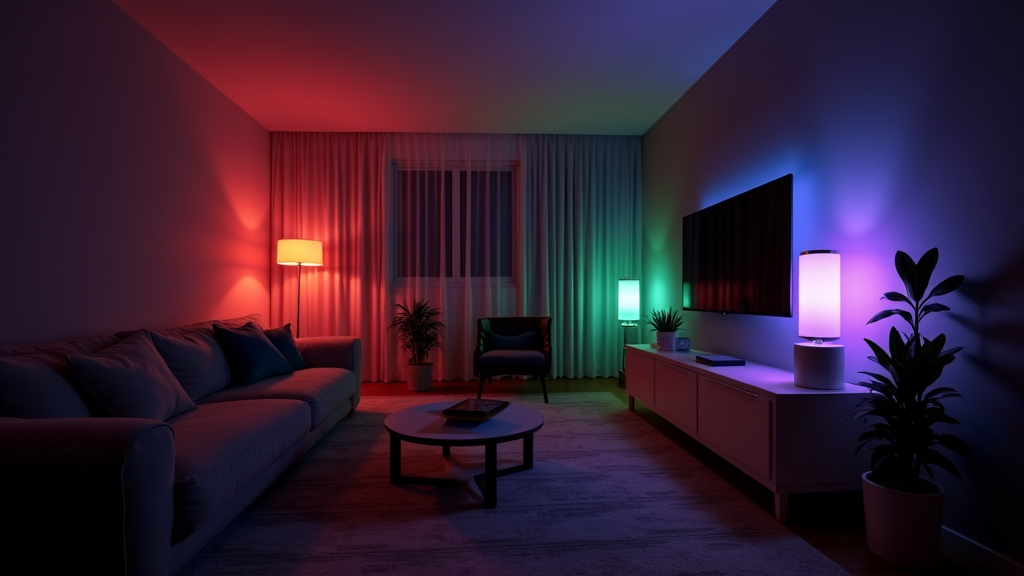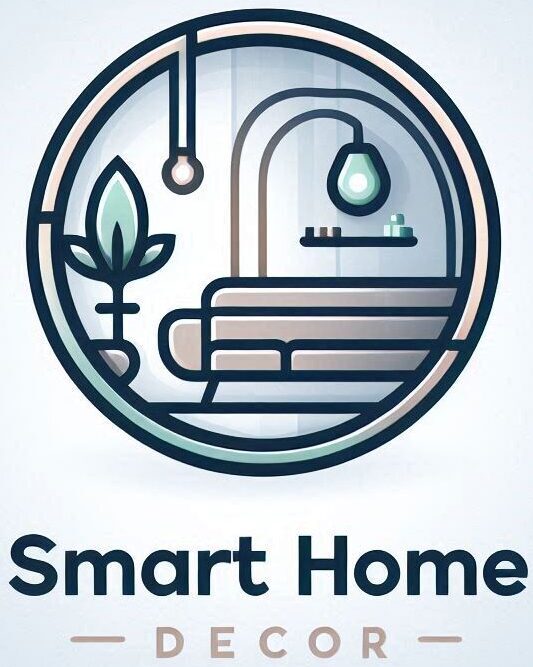Smart lighting does a lot more than just give your home that next-level cool vibe. Automating your home’s lights means you always return to well-lit spaces that feel cozy and welcoming while shrinking your energy bills. Stepping into home automation can be overwhelming, so I’ve put together the simplest steps, go-to gear, and straightforward tips that actually make a difference. Here’s the scoop on automating your lighting for comfort and efficiency.

Why Automated Lighting Is a Game Changer
Automating the lights in my place totally changed the way each space works depending on the time of day. Gone are the days when I’d forget to flip a switch or leave a light burning all night. My lighting now adjusts on its own based on when I’m around, my usual schedule, and the cycles of sunset and sunrise. Not only does this mean no more stumbling around or wasting energy, but it also covers my home’s security when I’m out. Fun fact: The U.S. Department of Energy says lighting makes up about 15% of an average home’s energy use. Since setting up smart lighting controls, my electric bill has dropped and it didn’t take much effort.
Automated lighting easily builds a welcoming mood for evenings, gently wakes me up in the mornings, and sets just the right scene for movie nights. You really feel the comfort and efficiency together—they go hand in hand and are both super useful over the long haul.
Getting Started with Lighting Automation
Stepping into lighting automation doesn’t mean shelling out for the fanciest bulbs on the market. You can keep things simple or go deeper as you get comfortable. Here’s a quick list of what to look for if you’re new to this whole scene:
- Smart Bulbs: An easy first move. Just swap in a Wi-Fi or Zigbee-enabled bulb and control it by app or by voice.
- Smart Switches or Dimmers: Like your old bulbs? Keep them, and add automation at the wall switch side to get those handsfree perks.
- Smart Plugs: These make any plug-in lamp ready for automation instantly, no rewiring needed.
- Motion Sensors: Pop these in hallways, bathrooms, or laundry rooms so lights come on only when someone’s actually there.
- Voice Assistants: Alexa, Siri, or Google Assistant can be put to work setting scenes, controlling lights, and running routines.
Mix and match these as you like. While some people pick just one brand ecosystem (like Philips Hue or Lutron), a bunch of options can work together by using platforms like SmartThings or Home Assistant, which is pretty handy.
Simple Steps to Automate Your Lighting
Here’s how my setup took shape. If you’re unsure how to begin, follow these steps:
- Start Small: Pick a room or area where lighting could use an upgrade—think entryways or bedrooms.
- Pick Your Gear: Decide on smart bulbs or switches. Renters usually like bulbs, while switches make sense if you own your place.
- Install the Devices: Screw in the bulbs and link them with your app. For smart switches, be ready for a little electrical work (always cut the power first, or call an electrician if needed).
- Connect to Your System: Use the app’s instructions to tie your devices into your Wi-Fi or hub. This is where you name rooms, assign bulbs, and group switches for easier control.
- Create Automations: Set your lighting schedules and routines. Maybe set your hallway lights to pop on when it gets dark, or have your bedroom lights fade in as your alarm goes off.
This gets the basics running and makes room for future upgrades. Be warned: You’ll probably want to automate even more once you see how well it works!
Top Lighting Automation Features Worth Trying
A few smart features will really bring your setup to life. These are my everyday favorites:
- Dusk-to-Dawn Schedules: Your lights come on as sunlight fades and turn off at sunrise without a second thought.
- Vacation and Away Modes: Cycle lights on and off while you’re gone to give the impression someone’s always home—simple but effective for safety.
- Gradual Brightness Transitions: Lights gently ramp up to mimic dawn when it’s time to wake or dim slowly at bedtime to help you relax.
- Presence Detection: With motion sensors or using your phone’s location, lights only come on when a room is being used, slashing wasted energy.
- Scene Settings: Tap a button or use your voice to set the perfect scene for reading, movies, or dinner. It’s small stuff, but it makes a difference.
These tricks save energy and make rooms feel like they’re reacting to you, dialing up the comfort in daily life.
Best Ways to Boost Comfort and Efficiency with Smart Lighting
It’s easy to chase lower bills and forget about how good lighting can feel. Here are some winning combos for both comfort and efficiency:
- Use LED Bulbs: LEDs use a fraction of the power and last much longer than incandescent bulbs. Most smart bulbs are LEDs, so you get a double win on energy.
- Automate Unused Rooms: Motion sensors in spots like the hallway or laundry area mean lights turn on while you’re there and snap off the minute you leave.
- Embrace Dimming: Setting lights at 60-80% brightness saves power and still lights up your space just fine. Many apps let you adjust dimming remotely, too.
- Balance Color Temperature: Set warm white (around 2700K) for winding down in the evenings, and cool white during the day to stay alert. Some bulbs even let you automate color shifts based on the time.
- Fine-Tune Schedules Seasonally: As daylight changes with seasons, tweak your automations so lights don’t turn on when there’s enough sunlight outside.
Getting the right amount of light at the right time means you boost both mood and efficiency. The more your routines get dialed in, the rarer it’ll be to miss leaving a light on overnight.
What to Think About Before Investing in Smart Lighting
Every automation setup comes with questions and a few challenges. These are the big things to consider before you start shopping:
- Compatibility: Always check that the brand of bulbs, switches, or plugs will work with your hub or assistant (Alexa, Google, or Home-Kit)—it avoids headaches later.
- Wi-Fi Coverage: Bigger homes need solid Wi-Fi everywhere you want to automate. If not, Zigbee or ZWave hubs might offer better range.
- App Usability: Pick brands whose apps are easy to use. If setup is simple and schedules are a breeze to adjust, you’ll be glad later.
- Initial Cost versus Savings: Smart lighting gear costs more initially but uses less energy and lasts years longer. Over time, it pays for itself—even if you’re on a budget, consider this in your plan.
- Privacy and Security: Online devices should be kept safe. Stick with brands that do regular updates, use secure connections, and respect your privacy. Don’t shy away from researching reviews first.
Compatibility Example
I run Philips Hue and LIFX bulbs along with Lutron Caseta switches. Different brands mean different apps, but using Apple Home-Kit ties it all together for simple control. Some people prefer to use just one brand for easier setup—there’s no right or wrong here, so pick what works best for you.
Wi-Fi Coverage Tips
If certain rooms are Wi-Fi dead zones, a mesh network or a Zigbee/ZWave hub can keep things running smoothly. This way, even far-flung rooms will have reliable control over their lights.
Advanced Automation Tricks for Super Comfortable Living
Once you have the basics down, step up your setup with some more creative add-ons:
Sunrise/Sunset Triggers: Base your lighting on real-world sunrise and sunset times right where you live, so your home adapts as the seasons change and saves even more energy.
Multiroom Scenes: Connect living room, kitchen, and hallway lights so you can set a smooth evening or a bright morning scene with one command.
IFTTT Automations: With IFTTT, there’s almost no limit—have hallway lights blink when the garage opens or make your bedroom glow red when the alarm’s triggered.
More Than Motion: Use light sensors so lamps only turn on if daylight isn’t bright enough, or use temperature sensors to pick cooler or warmer tones through the seasons.
Start with the basics and then get more creative once you’re comfortable with how it all fits together. Adding these features makes your home feel really tuned to your needs.
Frequently Asked Questions
Here are common things people ask about automating lighting for both comfort and energy savings:
Question: Is it hard to set up smart lighting?
Answer: Not usually! Smart bulbs work right out of the box. Smart switches may need some wiring, but video guides help a lot. Don’t stress—call in help if you’re unsure.
Question: Smart bulbs or smart switches—what’s better?
Answer: Each has strengths. Bulbs are easy and best for renters, while switches cleanly automate all bulbs on a circuit. I use a mix based on the room.
Question: Do automated lights really save money?
Answer: Absolutely! LED savings and never leaving lights on by accident add up. You might see a drop in your bills in just a few months.
Question: If my internet goes down, will it still work?
Answer: Zigbee, ZWave, or hub-based automations usually keep running. Anything relying on the cloud or your phone’s connection may pause until Wi-Fi is back.
Making It Work for Your Home
Automated lighting brings extra comfort, convenience, and real energy savings. Whether you start with just a few smart bulbs or jump in with a full setup, you’ll find it makes everyday routines easier and trims a bit off your utility bills. Test features, see what you like best, and tweak your setup as it fits your life—smart lighting is all about making your space work for you.
